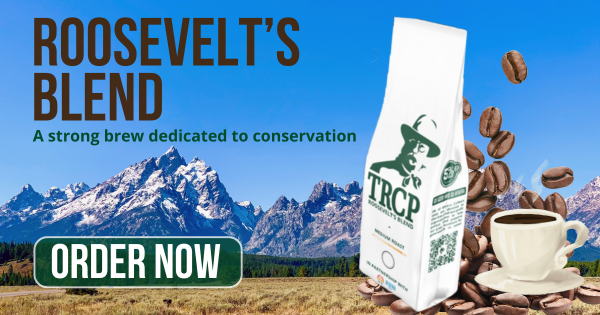Ian and Charity Rutter own and operate R&R Fly Fishing, a fly fishing guide service located in Townsend, Tenn. They have two children and are active members with Little River Chapter of Trout Unlimited, spending many of their off days volunteering with fisheries biologists in the nearby Great Smoky Mountains. Their professional lives are spent treating anglers to the wild trout streams of the nearby Great Smoky Mountains National Park and on East Tennessee’s tailwaters, rivers, and lakes. Charity and Ian have traveled across the country to share their knowledge and passion for fly fishing, and together, the Rutters have written and photographed multiple books on the subject. Their publications and presentations encourage people to get outside and enjoy the sport of fly fishing.
From now through August 31, Charity and Ian are guest judging your best “National parks, national treasures” photos for this round of the #PublicLandsProud photo contest. They’re looking for a winning photo that for photos that don’t necessarily highlight the best-known places but rather these equally impressive scenes that most people miss, so make sure your national parks moment beckons! And watch the TRCP Instagram account this week too, as Charity and Ian will be taking over our account the week of August 15 and giving us a glimpse into their lives on public lands.
TRCP: How do the Rutters like to spend time outside?
Charity & Ian: Public lands are more than just our livelihood, they are the source and reason for our outdoor lifestyle. We are “solar powered” people, so living a life outside is required for our good health and happiness. We spend time as a family camping, hiking, fishing, boating, swimming, backpacking, and exploring as many wild places as we can. We hunt, forage wild mushrooms, and teach our children how to recognize all the flora and fauna that surround us. We teach them how to live outside and have respect for our rivers and mountains. We volunteer for stream restoration projects, river cleanups and educating the children in our public schools on the importance of clean water and air through the Trout in the Classroom program.
TRCP: What makes a great photo of a summer day spent on public lands? What will you be looking for in the winning photo?
Charity: I love to see photos that highlight the little things that surround us every day in nature – the tiny wildflower or mushroom, a salamander on a rock, or the dew drops on a fern in the woods. I love the natural light that beams through the trees as if putting a spotlight on a mossy rock or creating a sparkle on the water.
Ian: Public lands are known for iconic scenes often seen on posters and calendars, but in my experience, it’s the places that are out of sight of a road or more than a few steps off a trail that catch my attention; I’m looking for photos that don’t necessarily highlight the best-known places but rather these equally impressive scenes that most people miss.

TRCP: What make the Rutters #PublicLandsProud?
Charity & Ian: Public lands provide a resource that can be used by everyone. We are proud to be involved in volunteer work that helps restore native brook trout in the Smokies. We take our ownership in public lands seriously and dedicate ourselves to educating others on the importance of public lands and clean water. We’re proud to live in a country that gives us and our children the freedom to explore so many wild places.
Show us your #PublicLandsProud moment and you could be featured on our blog and win a #PublicLandsProud prize package. It includes a new pair of Costa sunglasses, a copy of Steven Rinella’s new book, The Complete Guide to Hunting, Butchering, and Cooking Wild Game, a Simms TRCP-branded hat, a First Lite merino wool neck gaiter, TRCP/Sitka-branded YETI rambler tumbler, Orvis fishing shirt, and Bantam buck knife.













